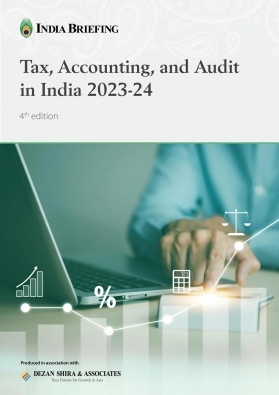India Introduces Final Angel Tax Rules for Overseas Investments in Startups
India has finalized its rules for taxing overseas investments in startups in the country—commonly called the ‘angel tax’ provision. We discuss the valuation process for startup investors under the amended Rule 11UA.
Following public consultations, the Central Board of Direct of Taxes (CBDT) has officially announced the final valuation rules (revised Rule 11UA) for overseas investments in startups in India. These amendments are in response to the Finance Act, 2023’s inclusion of non-resident investments in Section 56(2) (vii) (b) of the Income-tax Act 1961, commonly known as the ‘angel tax’ provision.
The changes are aimed at addressing concerns about valuation disputes and ensuring clarity in the taxation of investments, both from residents and non-residents. The rules, effective from September 25, offer investors the flexibility of picking any of the newly introduced five valuation methods in addition to discounted cash flow and net asset value methods for determining angel tax incidence under Section 56(2) (vii) (b) of India’s Income-tax Act 1961.
Key highlights of amended Rule 11UA: Impact on valuation process for startup investors in India
The amended Rule 11UA introduces notable changes that are poised to impact the valuation process for both resident and non-resident investors in India. These changes will have far-reaching implications for businesses and investment entities. Here’s an overview of the salient features:
- Enhanced valuation framework: The amended Rule 11UA brings forth a distinct valuation framework tailored for compulsorily convertible preference shares (CCPS). Importantly, it offers the flexibility to utilize the fair market value of unquoted equity shares as a reference point for determining the fair market value of CCPS.
Fair market value of unquoted equity shares =(A–L)× [PV/PE], where,
“A” represents the book value of assets as recorded in the balance sheet. This value is computed after deducting any taxes paid, either collected at source or in advance as per the provisions of the Income-tax Act. Additionally, it accounts for any tax amounts claimed as refunds under the same Act. This book value of assets also encompasses any amounts listed in the balance sheet as assets, which may include the unamortized portion of deferred expenses. It’s important to note that this unamortized amount should not be mistaken for representing the value of any tangible asset.
“L” represents the book value of liabilities as reported in the balance sheet, with certain exclusions. It should not include the following categories of amounts:
- The paid-up capital related to equity shares.
- Any funds set aside for dividend payments on preference shares and equity shares, as long as such dividends have not been formally declared before the date of transfer during a general body meeting of the company.
- Reserves and surplus, irrespective of whether the resulting figure is positive or negative, except those reserved for depreciation purposes.
- Any amounts representing provisions for taxation, excluding the tax amounts paid as deductions or collections at source or as advance tax payments, and subtracting any tax amounts claimed as refunds under the Income-tax Act. This subtraction should be done to the extent that it exceeds the tax payable based on the book profits as per the applicable tax laws.
- Any amounts representing provisions established to cover future liabilities, as long as those liabilities are not precisely ascertained.
- Any amounts representing contingent liabilities, excluding any outstanding dividend payments due for cumulative preference shares.
“PE” refers to the total value of paid-up equity share capital, which is the amount displayed in the balance sheet.
“PV” signifies the paid-up value of these equity shares, which is the value that each individual equity share holds.
- Diversification of valuation methods: Previously, Rule 11UA primarily relied on two valuation methods, namely Net Asset Value and Discounted Cash Flow, for ascertaining the fair market value of equity shares issued to resident investors. The amended rule introduces five more methods, including the Comparable Company Multiple Method, Probability Weighted Expected Return Method, Option Pricing Method, Milestone Analysis Method, and Replacement Cost Method, for valuing unquoted equity shares and CCPS for non-resident investors.
- Price matching for fair benchmarking: The concept of price matching, originally introduced in draft rules for resident and non-resident investors, is now extended to CCPS. This mechanism entails adopting the price at which unquoted equity shares or CCPS are issued to specified non-resident entities, venture capital funds, or specified funds as the fair market value. However, this adoption is contingent upon meeting specific conditions.
- 90-day window period for valuation reports: In line with the price matching mechanism, the fair market value determination is tied to the timing of consideration receipt. Notably, if the consideration for shares is received within a 90-day window before or after the share issuance date, the price at which they were issued to specified non-resident entities, venture capital funds, or specified funds shall be recognized as the fair market value.
- Valuation report flexibility: The previous incarnation of Rule 11UA necessitated a merchant banker’s Discounted Cash Flow valuation report precisely on the date of share issuance. The amended rule introduces a more accommodating approach. It now accepts valuation reports issued up to 90 days prior to the date of share issuance for computing fair market value, applying to both resident and non-resident investors. This adjustment shifts the reference date for valuation from the date of consideration receipt to the date of the merchant banker’s valuation report.
- Safe harbor valuation tolerance: An entirely new facet introduced by the amended Rule 11UA is the safe harbor valuation tolerance limit, applicable to both resident and non-resident investors. This provision allows for a 10 percent tolerance range. In other words, if the issue price of unquoted equity shares or CCPS falls within 10 percent of the price determined by the Net Asset Value, Discounted Cash Flow, or any of the newly introduced valuation methods, it is automatically considered as the fair market value.
What are the valuation methods available for residents and non-residents?
Discounted Cash Flow
- Methodology: Determined by a merchant banker’s expertise.
- Applicability to investors: Both resident and non-resident investors.
- Applicability to types of shares: Unquoted equity shares and CCPS.
Net Asset Value
- Methodology: Calculated on a normative basis using the book value of assets and liabilities.
- Applicability to investors: Only non-resident investors.
- Applicability to types of shares: Unquoted equity shares.
Five new valuation methods as per merchant banker report
- Methodology: Recommended by merchant bankers.
- Applicability to investors: Both resident and non-resident investors.
- Applicability to types of shares: Unquoted equity shares and CCPS.
The five additional valuation methods:
- Comparable company multiple method: This approach involves assessing a company’s value by comparing it to similar companies in the same industry.
- Probability weighted expected return method: A forward-looking method that considers various scenarios and their probabilities to calculate the expected return.
- Option pricing method: This method applies financial options theory to determine the value of an investment, considering its inherent flexibility and potential upside.
- Milestone analysis method: Focusing on critical company milestones, this method links valuation to key achievements such as product launches or market expansions.
- Replacement cost method: This method assesses an asset’s value by calculating the cost required to replace it with a similar asset, accounting for associated expenses.
Also read
About Us
India Briefing is produced by Dezan Shira & Associates. The firm assists foreign investors throughout Asia from offices across the world, including in Delhi and Mumbai. Readers may write to india@dezshira.com for more support on doing business in India.
We also maintain offices or have alliance partners assisting foreign investors in Indonesia, Singapore, Vietnam, Philippines, Malaysia, Thailand, Italy, Germany, and the United States, in addition to practices in Bangladesh and Russia.
- Previous Article Companies in India Can Hold Virtual AGMs and EGMs till September 30, 2024
- Next Article Import Relief for IT Hardware Companies as India Encourages Local Production








